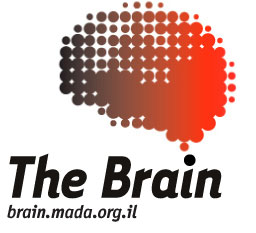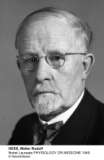


 |
||
|
1949 - ½ prize: Walter Rudolf Hess
½ prize: Antonio Caetano de Abreu Freire Egas Moniz
The connection between function and localization in the brain has long interested man due to its relevance for neurophysiology and clinical applications. Although the function of the midbrain as a higher center of the autonomous nervous system was already known, the research of Walter Rudolf Hess mapped out these functions in detail. Introducing a thin metal wire into the midbrain of cats, Hess applied stimulation or caused destruction of very small areas, being able to study the effect of the stimulus or the disappearance of function. There were various effects, each emerging from one definite center of stimulation. Each location was related to a set of complex functions of both skeletal muscles and appropriate autonomic functions, such as characteristic body postures, attempts at escape or attack, and so forth. The frontal lobes were known to be important for higher cerebral activity, especially emotions and highly integrated intellectual functions. This led Moniz to the thought that destroying the frontal lobes or their connections to other brain parts may relieve psychic states. Thus, he developed a method called frontal leucotomy, in which the white matter connecting the frontal lobes to the rest of the brain is interrupt. Morbid conditions reacted favorably to the operations, with the majority of the non-schizophrenic groups and a few within the schizophrenic group, recovering and becoming capable of working. On the other hand, double-sided leucotomy also leads to changes of personality. Thus, despite certain limitations of the operative method, frontal leucotomy must be considered one of the most important discoveries ever made in psychiatry.
|
||


